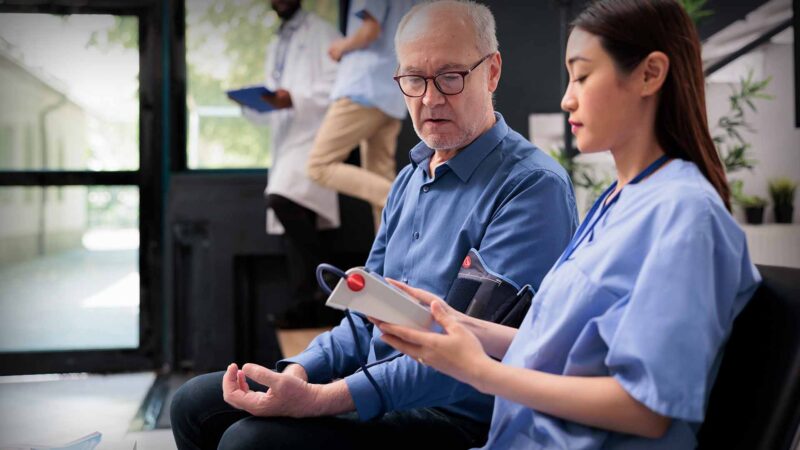In a wide ranging report looking at the carer needs across Australia, PwC Australia published Reimagine Care Workforce Solutions in October 2022.
Re Aged Care spoke with Kerryn Dillon, Director Ageing and Reablement and Health Workforce at PwC Australia about the community care sectors of aged care, disability care and childcare the report covers.
Kerryn references some of the demands on community care workers:
- 22% of the 5.7 million aged over 60 in Australia access aged care services
- 10% of the 1 in 6 people living with a disability access specialised disability services through the NDIS
- 1.3 million of the 1.6 million children in Australia aged under 5 access child care services
Kerryn states there is a significant overlap in the duties performed across the segments and the demand will continue to grow. There are 4 key challenges that she talks about
- Demand increasing due to population growth, the ageing population, growth of NDIS
- Ageing workforce across domains such as nursing and aged care, further compounded by the same rate not entering the workforce
- Limited training for the existing workforce and focus on compliance rather than best practice
- Poor value proposition making it difficult to attract new workers
Frances McMurtrie, Senior Management from Strategy&, a division of PwC Australia speaks about the work Strategy& has done in the report on applying a demand and supply model to the care workforce shortage issues.
Frances talks about the factors and levers that determine the supply of workers, especially the key factor of motivation in performing a care worker role. The analysis includes the care worker pipeline or funnel that approximates (using ABS, Aged Care Workforce Census and NDIS National Workforce Plans) that of the 13 million Australian making up the total labour force, there are less than 1 million who are interested, trained and delivering care roles.
In researching the drop off from a pool of 13 million to 1 million, most investment is going into the “narrow-end” for training and recruitment. Research has shown there is a lack of investment in the motivation supply factor, in closer proximity to the total labour force of 13 million (and even at the top of the funnel where the working age population is at 16 million).
As Frances points out, current communication strategies on attracting care workers are focusing on the existing value proposition of being a care worker – primarily on altruism.
Reimagining care workforce solutions forms PwC Australia and Strategy&’s assessment on fiscal policy, the share economy, the role of telecare or virtual care and using robotics.
Both Kerryn and Frances conclude with earmarking technology being a significant enabler of the care worker sector and addressing some of the challenges.
You Might also like
-
Addressing Wound Management
The cost of chronic wounds in Australia is estimated to be $3 Billion per year, impacting 420,000 Australians. Not only is this a national economic concern, but more importantly, is the suffering the person may be going through.
Australian Health Journal met with Hayley Ryan, Board Director and Chair at Wounds Australia and Director at WoundRescue to hear her work in chronic wound management, palliative wounds and pressure injury prevention to comfort those living with a wound.
-
New clinical research entity first to operate across both Australia and New Zealand
Over the past 30 years, 18,000 clinical trials that have been registered in Australia, with the sector contributing $1.4 billion to Australia’s economy annually. Trials are a critical aspect of evidence-based medicine, and are essential for testing how new treatments, tests and vaccines will work. In New Zealand they contribute $146 million to the New Zealand economy.
To capitalise on this unique position and growth, a coordinated multi-site clinical research operation was missing, until now.
-
Unleashing the potential of Paramedic skills and knowledge
According to a prominent paramedicine academic and researcher, paramedics have the potential to provide much-needed care in the community, changing the traditional healthcare model. Research points to paramedics having a wider healthcare workforce impact based on their ability to identify and fix problems 24/7.
Dr. Brendan Shannon is Head of Postgraduate Programs in the Department of Paramedicine at Monash University and a member of The Australasian College of Paramedicine. His interests including refining healthcare models, to ensure underserved communities receive requisite care. These alternative care pathways, like outreach programs, can work out of hospitals to provide care in underserved communities with social and complex chronic conditions.



